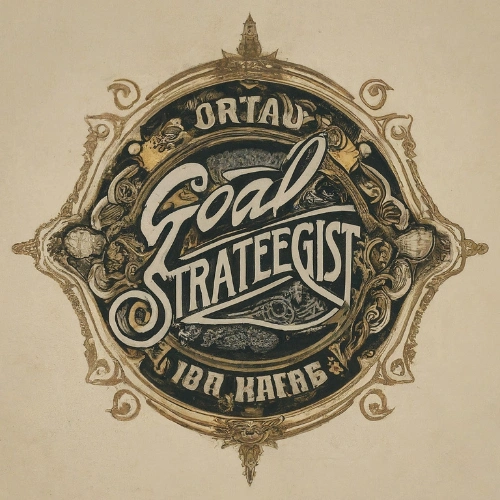Training isn’t just about skill-building; it’s a strategic powerhouse that can propel your organization towards its most ambitious goals. When you align training with your strategic vision, you’re equipping your team with the precise tools they need to not just meet but exceed expectations.
Imagine your workforce as a finely-tuned engine, where training is the oil keeping everything running smoothly. By investing in the right training programs, you’re ensuring that every cog in your machine is working optimally, driving your company forward with every learning opportunity.
In today’s fast-paced business world, staying ahead means constantly evolving. That’s where strategic training comes in, bridging the gap between where you are and where you want to be. Let’s dive into how a well-crafted training program can be your secret weapon in achieving your organization’s strategic objectives.
The Power of Training in Achieving Strategic Goals
Effective training is not just about enhancing the skills of your team; it’s about aligning individual talents with your strategic objectives. When your workforce understands the bigger picture, their motivation skyrockets, as they see how their role directly impacts the organization’s success. This clarity can lead to significant increases in productivity and engagement, which are critical in reaching those high-priority goals.
Training does more than just build competency; it fosters a culture of continuous improvement. You’ll find your team more adaptable and agile, ready to tackle new challenges head-on. By equipping them with the latest skills and knowledge, they’re able to pivot quickly in response to market changes and technological advancements. In turn, this ensures your organization remains competitive and on the cutting edge.
Embedding training into the organizational culture can have a transformative effect. It creates a loop of feedback and learning where each success and failure is an opportunity for growth. You’ll see a development of strong leaders who embody your strategic goals and who can inspire and guide others to contribute their best towards them.
Moreover, robust training programs provide tangible metrics for success that can be tracked and analyzed, giving you a clear picture of ROI over time. Metrics like increased sales, improved customer satisfaction, and reduced turnover rates are all markers that your strategic training is hitting its mark. Keep an eye on these indicators to gauge the effectiveness of your training initiatives and their alignment with your strategic goals.
It’s essential to consider the diversity of learning styles and needs within your organization. A one-size-fits-all approach won’t yield the best results. Instead, customize your training to cater to different preferences, be it through e-learning, workshops, or on-the-job training. This inclusivity not only improves outcomes but also ensures that everyone in your organization can contribute to the strategic goals, regardless of their role or position.
Aligning Training with Strategic Vision
Training within an organization isn’t just about skill enhancement; it’s a strategic tool that must be carefully aligned with the company’s long-term vision. When you invest in training, you’re doing more than developing competencies; you’re cultivating an environment where strategic goals are the driving force behind all learning activities.
Identifying Key Objectives
Before you can align training with your strategic vision, it’s crucial to pinpoint exactly what your key objectives are. These might include:
- Increasing market share
- Enhancing customer experience
- Driving innovation
- Adopting new technologies
With clear objectives in place, you can tailor your training programs to address these goals explicitly.
Customizing Training Materials
Customization is key when it comes to effective training. Recognize that your workforce is diverse, with varying preferences and learning styles. Create training materials that cater to this diversity while keeping the strategic vision in focus. Whether through interactive workshops, e-learning modules, or hands-on sessions, your training materials should resonate with the participants and relate directly to your strategic objectives.
Tracking and Measuring Impact
Once training programs are underway, it’s vital to track their effectiveness and measure their impact on strategic goals. This could involve tracking metrics like:
| Metric | Pre-Training | Post-Training |
|---|---|---|
| Sales Revenue | $500,000 | $750,000 |
| Customer Satisfaction | 75% | 90% |
| Innovation Index | 50 | 65 |
These metrics not only provide insight into the training’s ROI but also help refine the training process to better support strategic aims.
Engaging Leadership
Leadership engagement is a cornerstone of aligning training with vision. Leaders should be advocates and role models, illustrating the importance of continuous learning. They need to communicate the strategic vision consistently and motivate their teams to align their learning paths with the company’s direction.
By ensuring that your training initiatives are in sync with your strategic goals, you set the stage for a more focused and enlightened workforce. Your employees become empowered participants in the success of the company, driving it forward with intention and purpose.
Equipping Your Team for Success
When you’re looking to bolster your organization’s performance, it’s crucial to consider how adequately equipped your team is to meet strategic goals. Training is more than a formality; it’s a vital tool that prepares your staff to execute the company’s vision with precision.
Invest in Skills that are direct contributors to your strategic objectives. If innovation drives your business model, your training programs should focus on creative thinking and agility. Conversely, if customer satisfaction is the linchpin of your strategy, emphasize service excellence and communication skills.
Customize Training Materials to reflect the real-world scenarios your team will encounter. This approach transforms generic sessions into relevant, practical tools that can be immediately applied, turning knowledge into action.
- Identify essential skills gaps
- Develop training modules tailored to these needs
- Utilize case studies and role-play to enhance understanding
Measure Training Effectiveness with the same rigor as any other business initiative. Keep track of progress through key performance indicators that link directly to your strategic goals.
| Metric | Baseline | Target |
|---|---|---|
| Sales Revenue Increase | 5% | 10% |
| Customer Satisfaction | 85% | 90% |
| Employee Engagement Score | 75% | 85% |
Utilization of these metrics ensures you’re not just conducting training, but you’re also improving competencies that matter.
Leadership Involvement is vital in demonstrating the importance of training. By participating themselves and advocating for learning opportunities, leaders reinforce the value of these programs and underline their importance to the organization’s success.
Remember, your team’s ability to meet and exceed strategic goals hinges on how well-prepared they are. By equipping them with the right skills, mindset, and support, you set the stage for achievements that resonate with the core objectives of your enterprise.
The Role of Training in Driving Company Growth
When considering company growth, training often serves as the engine propelling organizations towards their strategic goals. By investing in comprehensive training programs tailored to the company’s vision, you set a solid foundation for sustainable advancement. You empower your employees to master new competencies, stay ahead of industry trends, and innovate within their roles.
Equipping Teams for Success
One of the key aspects of impactful training is ensuring your team possesses the right tools to transform strategic visions into tangible results. This means going beyond basic skillset training to:
- Encouraging critical thinking that aligns with long-term business objectives.
- Fostering a culture of continuous learning and professional development.
- Providing upskilling and reskilling opportunities to tackle emerging challenges.
These initiatives, when executed effectively, can lead to a workforce that is not only skilled but also agile and adaptive, two critical features of a growth-centric company.
Closing the Skill Gap
Your organization’s strategic goals likely demand a specific set of skills, some of which may be in shortage within your current workforce. By identifying these gaps through skill assessments or performance reviews, and subsequently offering targeted training, you can bridge this gap. This proactive approach ensures that your team is always at the forefront, driving growth proactively rather than reactively.
Harnessing Employee Potential
Training should not be a one-time activity but an ongoing effort to unlock the full potential of your employees. Customized learning paths that tie directly into your strategic objectives can:
- Enhance employee engagement, as they see a clear connection between their development and the company’s success.
- Improve retention rates, with a workforce that feels valued and invested in.
- Catalyze innovation as employees are encouraged to apply new skills in creative ways.
With a well-informed, strategically aligned training program, you’re not just investing in individual employees—you’re investing in the future of your entire organization. Focus on cultivating a learning environment where training is synonymous with opportunity, and growth is just the natural outcome of a well-equipped and motivated workforce.
Bridging the Gap: Training for Continuous Improvement
In today’s fast-paced business environment, continuous improvement isn’t just a perk—it’s essential for survival. Effective training programs serve as the scaffolding for this constant evolution, helping your organization stay competitive and adapt to market changes. When employees are equipped with the latest skills and knowledge, they are better prepared to innovate and improve business processes, which directly contributes to the strategic goals of your organization.
Understanding that continuous improvement involves incremental changes, training must be dynamic and responsive. Here’s how you can ensure that your training program is up to the task:
- Implement regular skill assessments to identify areas for improvement.
- Create a feedback loop between employees and trainers to refine training content.
- Encourage a culture where learning is valued as a key component of job performance.
Investing in training that targets key performance indicators (KPIs) related to process enhancement, quality control, and operational efficiency can yield significant returns. For instance, Six Sigma and Lean methodologies can be integrated into training curricula to drive waste reduction and improve profit margins.
| Key Performance Indicator | Impact of Training on KPI |
|---|---|
| Process Enhancement | +35% Efficiency |
| Quality Control | -20% Defect Rate |
| Operational Efficiency | +25% Speed to Market |
By fostering an environment that promotes lifelong learning and recognizes the value of continuous professional development, you set a precedent that keeps your team striving for excellence. Utilize cross-functional training to break down silos and encourage collaboration, ensuring that knowledge sharing becomes a natural part of your company culture. Plus, when you integrate cross-training, employees develop a broader skill set that can lead to innovative problem-solving approaches.
Remember, training for continuous improvement isn’t a one-off event; it’s an ongoing journey. It requires dedication, investment, and a proactive strategy to develop a workforce that not only meets but exceeds your strategic objectives. Support your teams in becoming more agile and responsive, and you’ll witness how they propel your organization towards its long-term goals.
Conclusion
Training is a powerful catalyst for an organization’s success, intricately linked to the achievement of strategic goals. By investing in tailored training programs, you’re equipping your workforce with the tools needed to innovate and excel in their roles. Remember, a well-trained team doesn’t just meet expectations; they have the potential to drive growth, foster a culture of continuous improvement, and significantly impact your bottom line. As you move forward, keep in mind the value of aligning training with your strategic vision—it’s not just about filling skill gaps, it’s about shaping a workforce that’s prepared to lead your organization into the future.


Leave a Reply